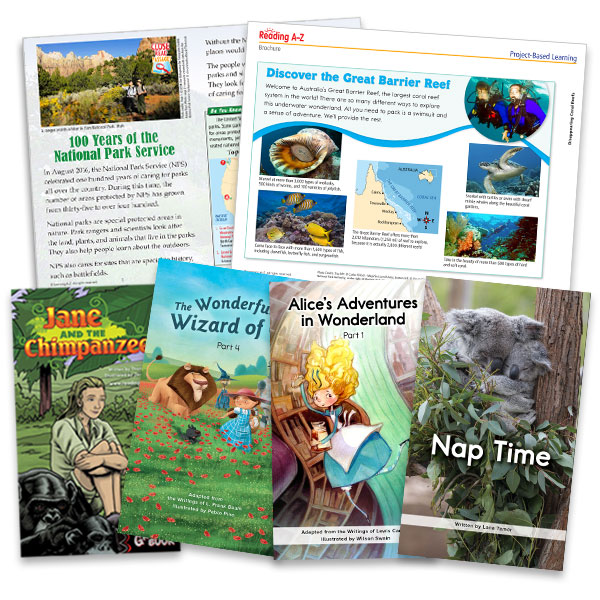Don’t Throw Out Your Leveled Texts!
Classroom libraries, both physical and digital, are huge investments that are essential to enhancing literacy proficiency. In addition to decodable books and passages, students need access to various text types to support different facets of reading instruction. As students gain reading skills, they need to apply them to many different types of texts, including texts of varying reading levels, texts written for different purposes, texts representing a wide range of genres, and so on.
So, rather than remove all of your leveled texts, think about how and when to use them to support research-based instruction, motivate and engage readers, and help students build the literacy and critical thinking skills to succeed in school and beyond.
Main Uses of Texts in Elementary Classrooms
Building Knowledge
Students read content-rich texts to deepen their world knowledge, expand their vocabularies, and comprehend what they read.
Learning Acceleration
Access to grade level texts is essential in closing the achievement gap.
Increased Reading Volume
Variety, quantity, and time to read helps students become better readers.
Vocabulary Acquisition
As students become more skilled at figuring out word meanings, their overall reading comprehension improves.
Choosing the Right Leveled Books and Passages
Educators have the crucial responsibility to help students find and read books that will strengthen their literacy skills. As teachers assign texts and reading tasks, they must integrate rich texts that add to their students’ learning experiences and help them become more proficient readers.
| When choosing books, educators should consider the following: |
|---|
|
|---|
| Teachers should ask the following questions: |
|---|
|
|---|
It is important to bring students into the fold, ensuring they have some choice regarding the leveled texts they read independently. Students build agency and enjoy reading when they can make choices that align with their individual preferences.
| When choosing books students should consider the following: |
|---|
|
|---|
| Students should ask the following questions: |
|---|
|
|---|
A Closer Look at the Raz-Plus Library
With Raz-Plus, you’ll also gain access to thousands of corresponding resources to enhance instruction and strengthen literacy skills. Listed below are some of the resources that support research-based literacy practices in the classroom by helping students build knowledge, address learning opportunities, read more, and expand their vocabulary.

- Reading A-Z Books
- Close Read Passages
- Close Reading Packs
- Themed Nonfiction Series
- Classics
- Graphic Books
- Text Sets
- Project-Based Learning Packs
- Paired Books
Books for Every Reader, Resources for Every Teacher
Raz-Plus equips every teacher, engages every student, and boosts every core curriculum while improving literacy outcomes. Learn more about this supplemental literacy solution and start a free trial today.
LEARN MORE

